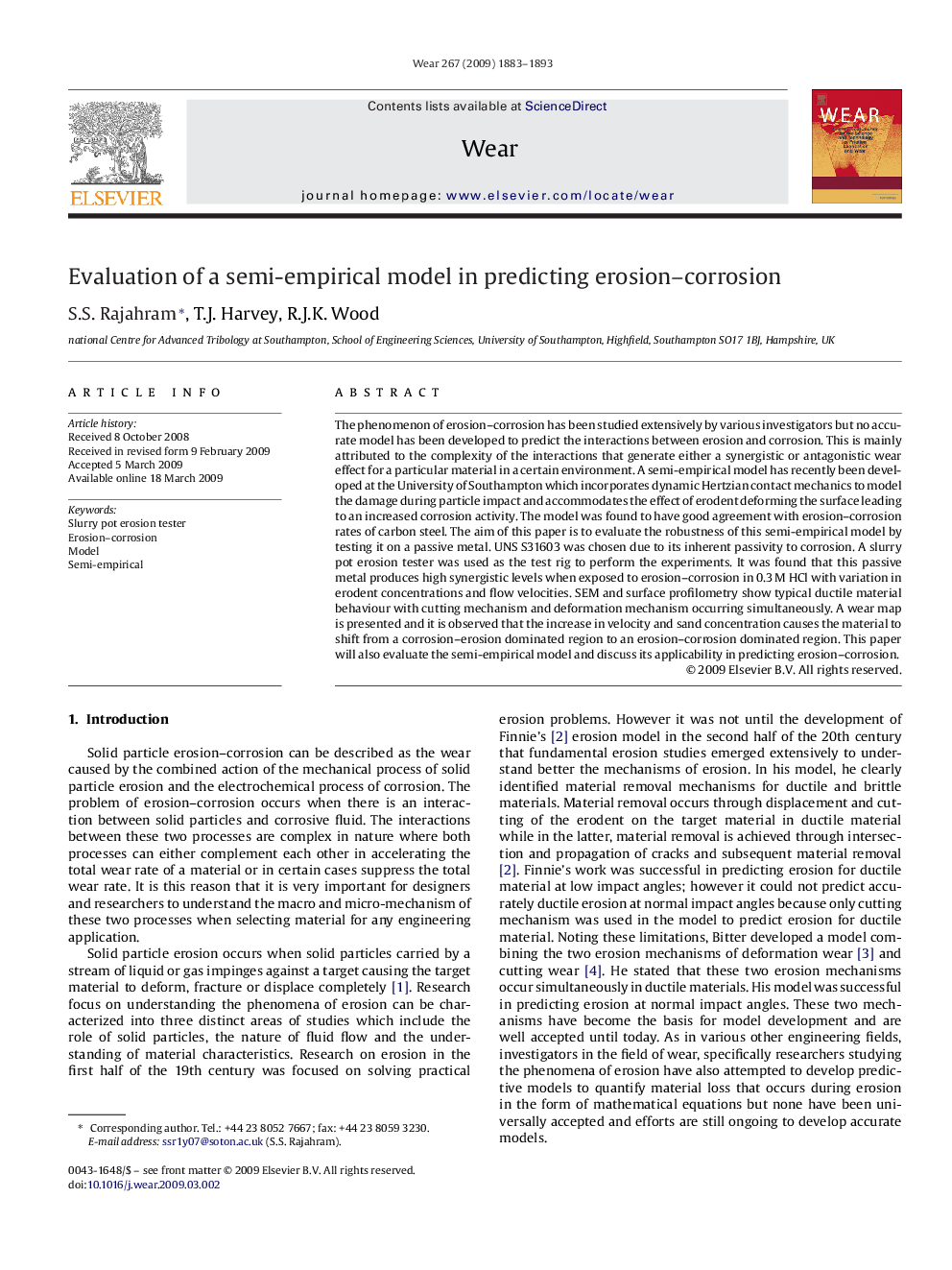| Article ID | Journal | Published Year | Pages | File Type |
|---|---|---|---|---|
| 619226 | Wear | 2009 | 11 Pages |
The phenomenon of erosion–corrosion has been studied extensively by various investigators but no accurate model has been developed to predict the interactions between erosion and corrosion. This is mainly attributed to the complexity of the interactions that generate either a synergistic or antagonistic wear effect for a particular material in a certain environment. A semi-empirical model has recently been developed at the University of Southampton which incorporates dynamic Hertzian contact mechanics to model the damage during particle impact and accommodates the effect of erodent deforming the surface leading to an increased corrosion activity. The model was found to have good agreement with erosion–corrosion rates of carbon steel. The aim of this paper is to evaluate the robustness of this semi-empirical model by testing it on a passive metal. UNS S31603 was chosen due to its inherent passivity to corrosion. A slurry pot erosion tester was used as the test rig to perform the experiments. It was found that this passive metal produces high synergistic levels when exposed to erosion–corrosion in 0.3 M HCl with variation in erodent concentrations and flow velocities. SEM and surface profilometry show typical ductile material behaviour with cutting mechanism and deformation mechanism occurring simultaneously. A wear map is presented and it is observed that the increase in velocity and sand concentration causes the material to shift from a corrosion–erosion dominated region to an erosion–corrosion dominated region. This paper will also evaluate the semi-empirical model and discuss its applicability in predicting erosion–corrosion.
